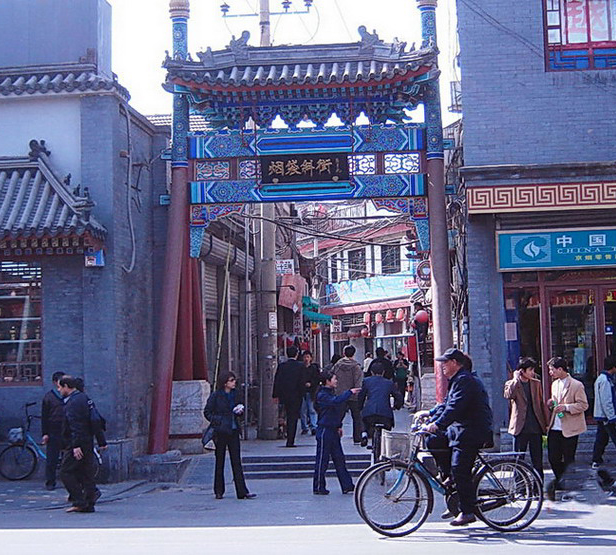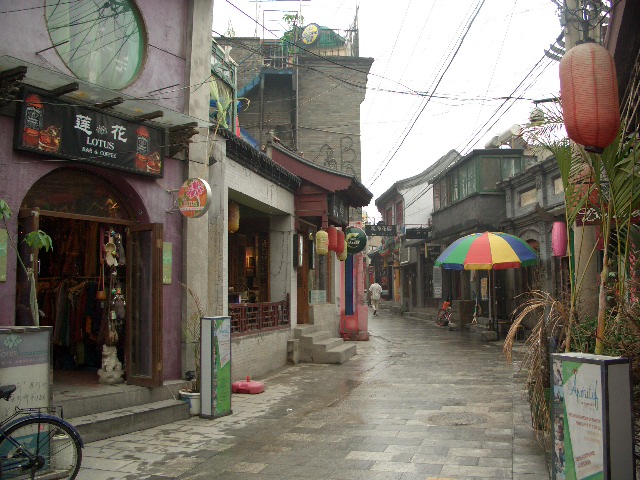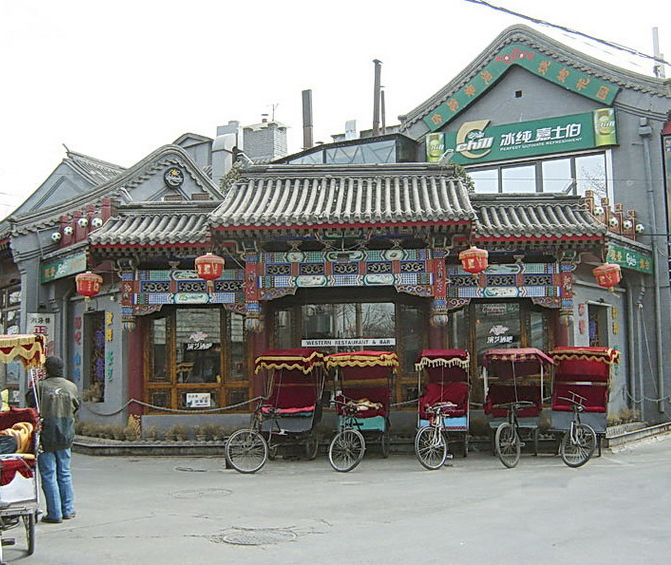Tobacco Pipe Lane, Hotspot of Beijing
Updated: 2007-05-17 08:54

|
Recording the Disappearing Old Beijing A group of people, take up their cameras and rush ahead of the bulldozers, trying to save bits of the memories contained in the centuries-old lanes... The full text is available on
page 52-57 of |
Yandai Xie Jie (Tobacco Pipe Lane) and Liulichang Market are two places that attract great bands of tourists, both night and day. But by hanging back from the crowd and lingering a little, letting the cooling breeze of a spring day draw you from the beaten track, you can experience some unexpected delights.
One of the hotspots of Beijing's nightlife, Yandai Xie Jie has the air of a briefly vacated party if visited on a weekday morning before the crowds arrive. Xie Jies are celebrated in Beijing for their human scale and meandering form, and approached from Di'anmen Avenue this one winds like a broken stream between two great tourist spots: Yin Ding Qiao to the east and Drum and Bell Tower at Gu Lou to the west.


Now something of a rarity in Beijing, the Xie Jie recalls a time when the city was almost entirely composed of narrow winding streets. With the demands of expansion, and the needs of motor vehicles, Beijing's roads were fully redeveloped in 1979 using a grid system and the remaining Xie Jie now act, quite literally, as a path back in time.
Tobacco Pipe Lane (Yandai Xie Jie) dates back to the Ming Dynasty (1368-1644) and once sold pipes and accoutrements. Street-side research will tell you that the name comes from its curved, pipe-stem-like shape.
Turning from Di'anmen Avenue, the history of Yandai Xie Jie pulls you down its narrow, flagstone laneway and throws you in the path of speeding pedicabs that ferry tourists more inclined to rest than to walk. There are old buildings that house contemporary "fusion" shops, selling clothes and music and cutting hair, and newly renovated buildings that display the ancient traditions of ethnic craft with wall hangings, woodcarving and batik.
| 1 | 2 |  |

